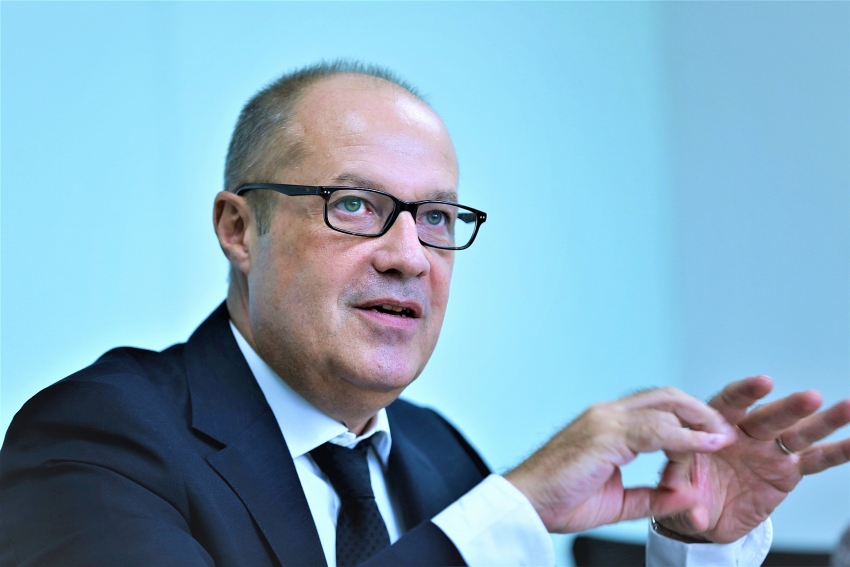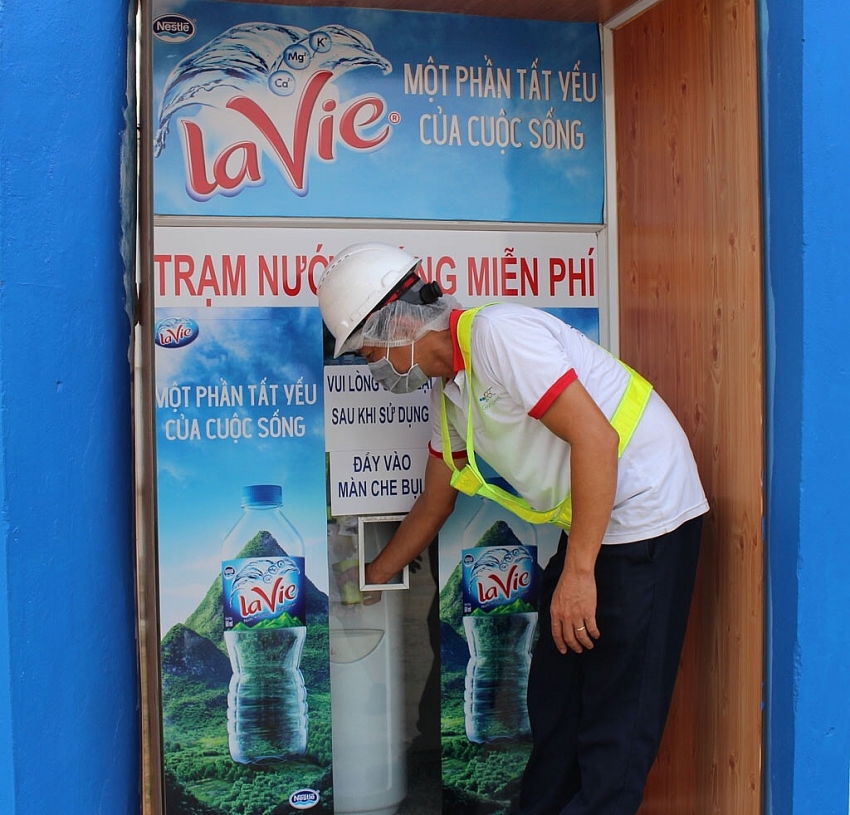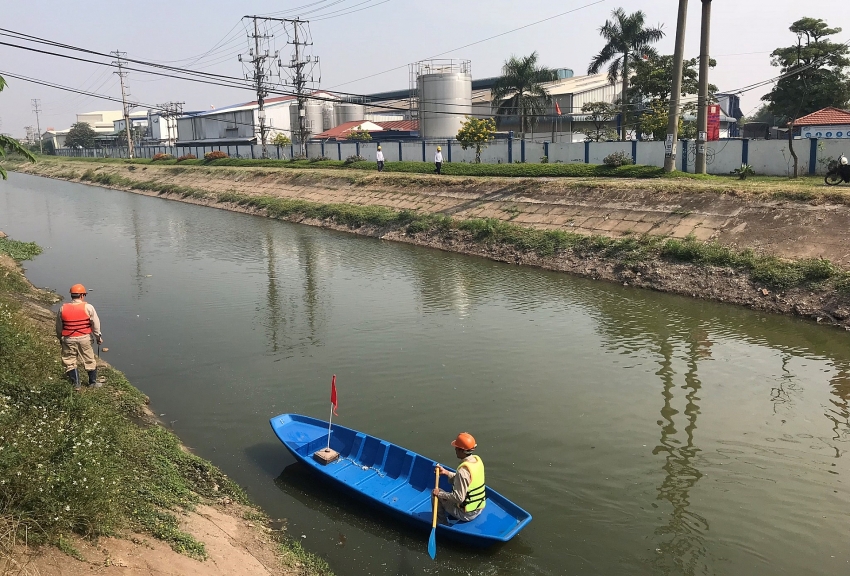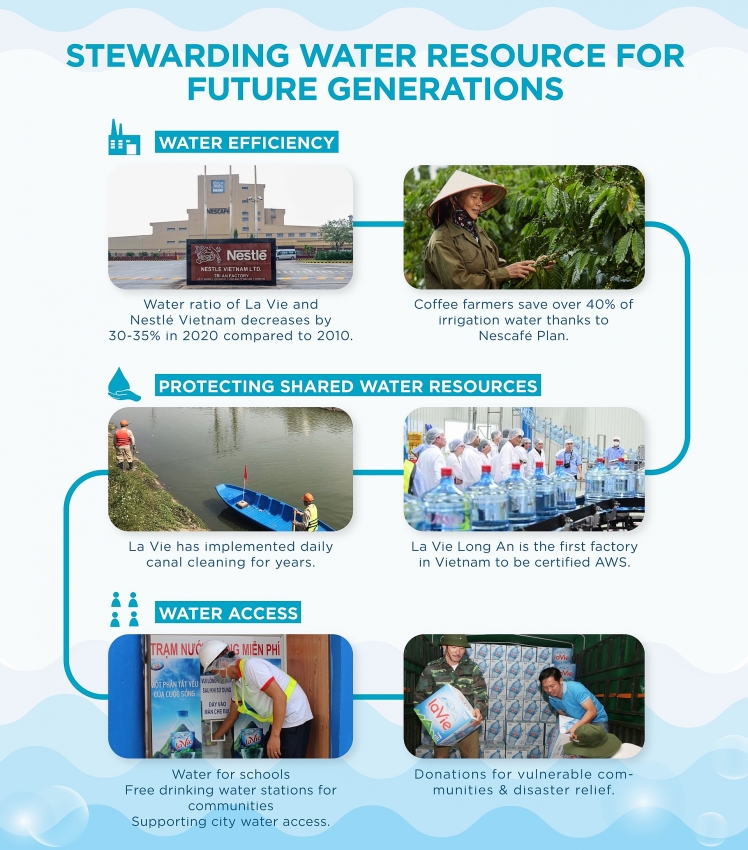Water neutral – La Vie sets ambitious water sustainable target
 |
| Fausto Tazzi, CEO at La Vie, photo Huu Khoa |
La Vie has been operating for more than 25 years in Vietnam. What have you done to preserve water sources throughout these years?
During the last years, we have gained many achievements but one of the most remarkable ones was having our Long An factory certified by the Alliance For Water Stewardship (AWS) in 2019, a global benchmark for responsible water stewardship across social, environmental, and economic criteria. The AWS standard covers a wide variety of watershed issues, including sustainable water balance, water quality, and shared water challenges within the region where a facility is located.
This is the first and only certificate of this kind in Vietnam so far.
At the moment, we are preparing to receive for the second certification for our Hung Yen factory, which will be delivered later this March, a little bit delayed due to COVID-19.
In addition, we are implementing a range of plans to support the local community by providing them access to safe water. This programme is called WASH (safe water, sanitation and hygiene). We also have the Water for School initiative under which we provide schools in Long An province with safe drinking water systems.
Regarding bio-diversity, Vietnam has a great deal of water but the quality of water remains a major problem. We have already launched activities like cleaning canals to improve water quality. We are also considering initiatives to help farmers use less water in irrigation or less fertiliser on their rice fields to limit the amount of chemicals reaching the ground water.
 |
| Free drinking water station for community was installed at gate of La Vie factory in Long An, photo Huu Khoa |
La Vie has set the ambitious target of offset 100 per cent of the water it uses by 2025. How will you achieve this?
The target is ambitious, but it is definitely feasible.
At La Vie, we maintain the highest treatment standards for our wastewater. You can see that the treated wastewater is also used to raise fish at our factory. It’s really safe for water organisms.
2021 is an important milestone for us, as we are making an important investment to install an online wastewater discharge analysis and control system which will be able to demonstrate that every drop of water that we discharge satisfies the highest quality standards before being released into the environment.
We are doing our utmost efforts to share our expertise and knowhow with partners to preserve water resources.
Improving water efficiency in production is one of the main programmes we are promoting. Through stringent control across our factories, Nestlé Vietnam and La Vie are saving more water each year. In 2020, the water ratio for yielding each product of Nestlé Vietnam and La Vie was 30-35 per cent less compared to 2010 thanks to initiatives to reduce and reuse water.
For example, water after the last rinsing of 5-gallon bottles in production can be reused for the first rinse of others.
In addition, initiatives to achieve water efficiency in agriculture can also help to protect water resources.
Could you share more about the company’s ideas to support water saving in agriculture to achieve the goal of water neutrality and preserve shared water sources?
According to the United Nation’s Food and Agriculture Organization (FAO), agricultural production accounts for 70 per cent of water used, industries use 20 per cent, and only 10 per cent goes for human use. Looking into this 10 per cent, only about 0.01 per cent is actually used for drinking.
We at La Vie are also considering initiatives to support farmers in reducing the amount of water they use for irrigation. We can offset all the water we use for production by helping farmers reduce the volume of water they use for irrigation by only 0.0001 per cent. That is why we are confident that we can achieve this target without too many challenges.
By 2025, we want to be water neutral but after 2025, we are already targeting to actually create more water than we take from the environment. We are cleaning canals and working with farmers to have more water resources to cover agricultural production after 2025.
 |
| La Vie is dredging and maintaining daily cleaning of the canal nearby its Hung Yen factory, photo Huu Khoa |
In agriculture, Nestlé Vietnam is implementing the NESCAFÉ Plan, a sustainable coffee farming programme in the Central Highlands province of Dak Lak, helping farmers save more than 40 per cent of irrigation water and reduce the use of chemical fertilisers and pesticides.
La Vie is, meanwhile, finding ways to support rice farmers in the Mekong Delta with projects to promote water efficiency and optimise water resources, and use less pesticide and fertilisers.
Last but not least, we are implementing many charity programmes to help vulnerable communities. We provide free water fountains fuelled directly by our factories to serve the local community, provide safe drinking water to local schools and areas which were impacted by flood and draught, as well as quarantine areas which were set up to treat COVID-19 recently.
| photo Huu Khoa |
La Vie has a factory in Long An in the Mekong Delta, one of the region’s most heavily hit in Vietnam by water shortages. As a day-to-day witness to the ravages water issues can bring, what initiatives have you launched to help local communities deal with these issues?
Salinisation and land subsidence are serious issues in the Mekong Delta and the whole region. The issue can’t be solved overnight by one single company, province or government authorities.
Besides providing the local communities in need with safe water, we are contributing by providing our knowhow and expertise, as well as promoting the discussion at the public level, and collaborate with related stakeholders to address the local water challenges and find solutions for these. Together we can safeguard our water resources to achieve sustainable development.
What the stars mean:
★ Poor ★ ★ Promising ★★★ Good ★★★★ Very good ★★★★★ Exceptional
Related Contents
Latest News
More News
- Businesses ramp up production as year-end orders surge (December 30, 2025 | 10:05)
- Vietjet chairwoman awarded Labour Hero title (December 29, 2025 | 13:06)
- How to unlock ESG value through green innovation (December 29, 2025 | 10:03)
- AI reshapes media and advertising industry (December 29, 2025 | 08:33)
- FPT and GELEX sign deal to develop blockchain tech for global markets (December 29, 2025 | 08:29)
- Vietnam’s GDP forecast to grow by 9 per cent in 2026 (December 29, 2025 | 08:29)
- Women entrepreneurs are key to Vietnam’s economic growth (December 29, 2025 | 08:00)
- Vietnam's top 500 value-creating enterprises announced (December 27, 2025 | 08:00)
- The PAN Group shaping a better future with ESG strategy (December 26, 2025 | 09:00)
- Masan Consumer officially lists on HSX, marking the next phase of value creation (December 25, 2025 | 13:20)


 Tag:
Tag:

























 Mobile Version
Mobile Version